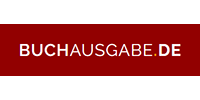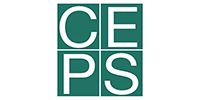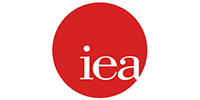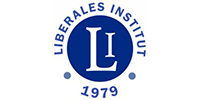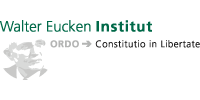The End of Milton Friedman’s Monetarism
by Dr. Emanuele Canegrati and Dr. Keith Weiner*
According to the latest data released by the European Central Bank on September 2, the outstanding amount of the central bank’s outright operations touched nearly €1.3T, with the lion’s share going to the public sector purchase program (nearly €1T). Table 1 shows the outstanding amount for every instrument used by the ECB (source: ECB website).
Instrument: Reference date – Outstanding amount
Covered bond purchase programme: 2 Sep. 2016 – 16,412 mn
Securities market programme: 2 Sep. 2016 – 108,404 mn
Covered bond purchase programme 2: 2 Sep. 2016 – 7,442 mn
Covered bond purchase programme 3: 2 Sep. 2016 – 190,735 mn
Asset-backed securities purchase programme: 2 Sep. 2016 – 20,142 mn
Public sector purchase programme: 2 Sep. 2016 – 1,001,947 mn
Corporate sector purchase programme: 2 Sep. 2016 – 20,497 mn
In governor Draghi’s view, the biggest injection of euros in the ECB history, associated with the negative interest rate policy undertaken by the central bank, should have brought Eurozone inflation back to the ECB 2% policy target. Many times, Draghi’s rhetoric inflamed investors. “We have shown we are not short on ammunition”, he swore last March, when the ECB cut the deposit rate by 10 basis points to a historic low of -0.4% and stepped up the pace of its quantitative easing program from €60bn to €80bn a month. Results? Quite disappointing.
The latest figures released by Frankfurt showed that the Eurozone inflation rate was only equal to +0.2% in August, unchanged from July and at only 1/10 of ECB target rate. A failure for the central bank. Figure 1 shows the monthly increase of ECB balance sheet (assets for Euro Area) compared to the Eurozone Harmonized Index of Consumer Prices (HICP) over time. Looking at these two trends, one may hardly say that a positive correlation exists.
Let’s consider another example: the quantitative easing program by the U.S. Federal Reserve. Since 2008, there has been a massive increase in the money supply. M0 has increased from about $875B to $4.07T in 2014 (all time high); M1 surged from $1.4T to $3.2T in July 2016 (all time high), or 2X and M2 sky rocked from $7.8T to $12.9 in July 2016 (all time high), or about 1.5X. But prices haven’t followed the same trend. The Bloomberg Commodity Index fell from about 175 to 83 on September 6, while the rate of inflation, as calculated using the Consumer Price Index, published monthly by the Bureau of Labor Statistics, was +0.8% in July 2016 and the average rate for 2015 was a meager +0.1%.
Finally, Japan. Last August Bank of Japan Governor Haruhiko Kuroda stated the bank will approve more quantitative easing or lower negative interest rates “without hesitation,” and that he felt that between quantitative easing and negative interest rates, the bank has an “extremely powerful policy scheme” and “will act decisively as we move on” in order to raise inflation to 2% policy target. And yet, notwithstanding the ¥80T ($733B) in government bond purchases per year, the Japanese inflation rate was -0.4% last July and the Tokyo’s secular decline in prices is far from being abandoned.
This international evidence is useful to demonstrate, amongst other things, the fallacy of the monetarist’s quantitative theory of money, which hypothesizes the existence of a positive (linear) relation between money supply growth and prices. According to this theory, if money supply increases by 1% prices should increase by approximately the same percentage, as monetarists believe that the excess of money supply in the economic system transforms to rising prices. “Inflation is always and everywhere a monetary phenomenon in the sense that it is and can be produced only by a more rapid increase in the quantity of money than in output”, wrote Milton Friedman, one of the biggest promoters of monetarism, in The Counter-Revolution in Monetary Theory (1970).
Contrary to Milton Friedman’s prediction, ECB and FED excessive expansion of the money supply did not drive prices up. Evidence also showed that the current deflationary spiral cannot be attributed to the reverse effect of a failure of central banks to increase the money supply during a liquidity crunch. Would Milton Friedman ever have written his theory in modern times with these data available? We can only wonder. Friedman had insisted upon the strong relationship between changes in the monetary aggregates and movements in the overall level of prices by observing statistics during the heyday of monetarism for many economies and for many time periods. And, for many years, evidence seemed to be by his side. But, after the Great Financial Crisis, the situation and data have changed and Friedman’s theory seems not to hold anymore.
Having not much faith in monetarism, Friederich von Hayek maintained that monetary expansions disrupt the market process, causing resources to be misallocated. It is not difficult to find evidence of Hayek’s prediction in the ECB’s quantitative easing program. The recent commitment by Frankfurt to extend the buying program to corporate bonds generated a rapid increase in the issuance of these securities. In just the month of August, traditionally a very calm one, the total issuance was €49.7B (€833.4B year-to-date). U.S. corporates switched to euro-denominated issuance, with very high-yield issuers amongst the most active in this rush, taking advantage from the higher risk appetite by investors for risky assets. Exactly what von Hayek defined with the term “malinvestments”, or investments undertaken by investors as a consequence of artificially low interest rates decided by central banks. The origin of bubble and financial crisis.
*Dr. Emanuele Canegrati is a PhD at Catholic University of Milan, economist at Department of Treasury, Head Market Analyst at BlackPearlFX and Fellow of the Liechtenstein Academy Foundation.
Dr. Keith Weiner is president of the Gold Standard Institute USA in Phoenix, AZ, and CEO of gold investment company Monetary Metals. He speaks and writes about free markets, money, credit, and gold.








